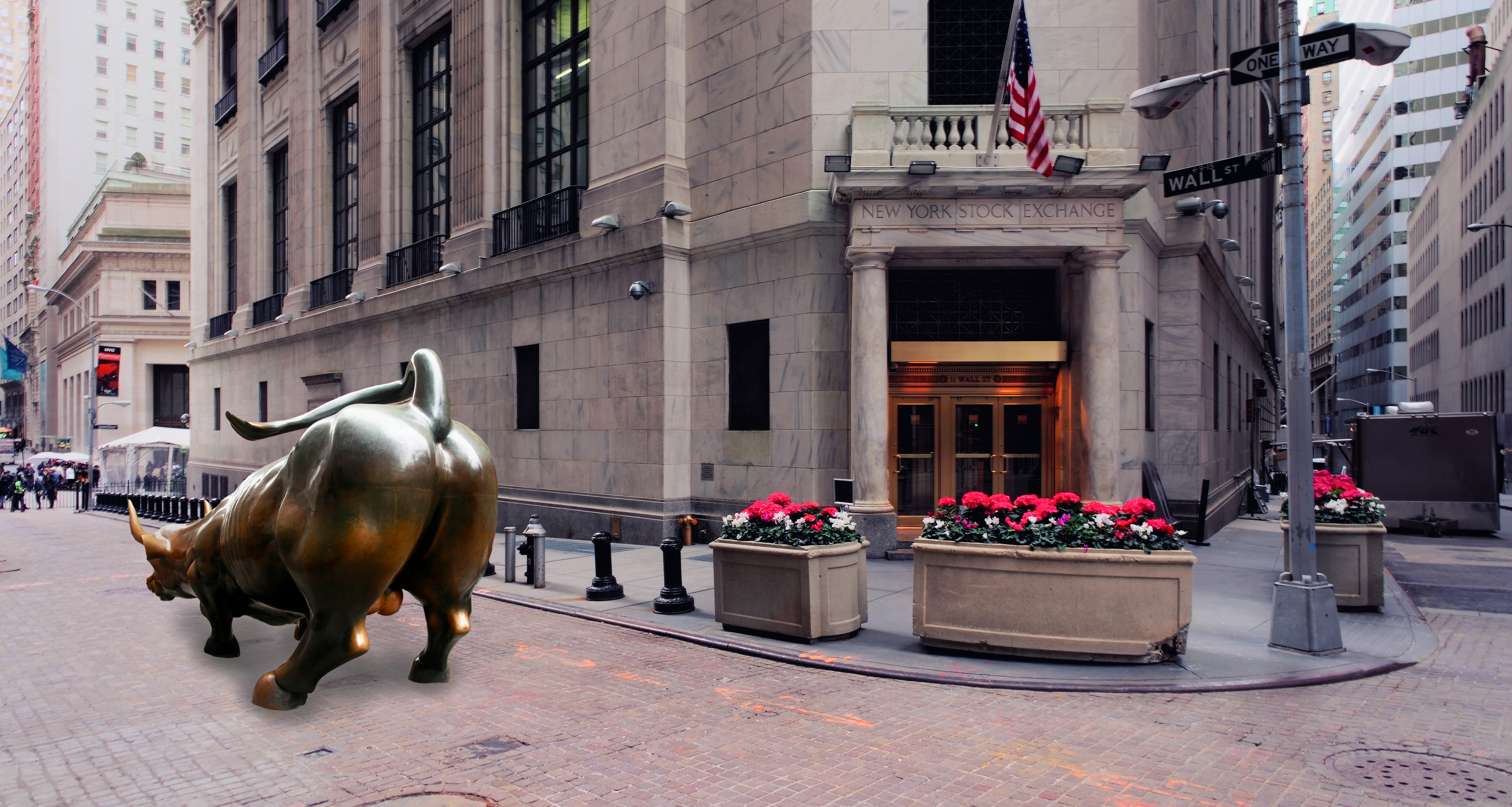This stock market run is total bull
It's the longest bull market ever. Or is it?


Get ready to pop some champagne on Wall Street. Today marks the longest bull run in America's history.
Or does it?
For the uninitiated, a bull market is generally understood as any period of months or years when stocks consistently rise at least 15 percent. They're ostensibly signs of a strong underlying economy, of booming corporate profits, of rising investor confidence. Thus, the bigger they are and the longer they last, the better.
The Week
Escape your echo chamber. Get the facts behind the news, plus analysis from multiple perspectives.

Sign up for The Week's Free Newsletters
From our morning news briefing to a weekly Good News Newsletter, get the best of The Week delivered directly to your inbox.
From our morning news briefing to a weekly Good News Newsletter, get the best of The Week delivered directly to your inbox.
But as with most statistical milestones, an enormous amount hinges on how you define your terms and your choice of data sets.
For instance, when someone says this bull run is the longest, which index are they referring to? Not all stock market indexes have been around long enough to impart the full sweep of modern American capitalism. We're basically restricted to the S&P 500, which started as the S&P 90 in 1926 and expanded to its current roster of 500 companies over the next 30 years, and the Dow Jones Industrial Average, which began all the way back in 1896. If you go with the first, then sure enough the S&P 500's rally has lasted 3,453 days as of this morning — the longest expansion in its history, by many metrics. But if we're looking at the Dow, the rally remains only its third longest.
Then there's the size of the increase. The S&P's previous longest rally, which lasted 3,452 days and ended in March 2000 when the tech bubble popped, saw a gain of 417 percent. The current rally may now be longer, but it's still only delivered a 322 percent increase so far. As of the start of 2018, the Dow's rise was 306 percent, way back in third place behind a whopping 495 percent increase from 1921 to 1929.
The complexities don't end there.
A free daily email with the biggest news stories of the day – and the best features from TheWeek.com
You also have to define when the bull market began. By definition, this means you have to figure when the preceding bear market ended. Depending on who you ask, a bear market entails a fall of either 15 percent or 20 percent. But as Mark Hulbert pointed out in April, are we measuring the fall based on the closing price of each day or on an intraday basis or what? Most mainstream reporting on the rally takes it as a given that the bull market began in March 2009, when the markets bottomed out in the aftermath of the Great Recession. But depending on how you answer Hulbert's questions for the S&P, we had a bear market in the middle of 2011 — slicing a good two years off the current run. If you expand to lesser-used indexes, there was another bear market that ended in 2016.
"Classification challenges like this one cry out for an objective definition," Hulbert wrote. He prefers the criteria set out by Ned Davis Research. By their standards, "there have been 37 bull markets since 1900 with an average length of 25 months. Those criteria also conclude that we currently are in bull market that began on Feb. 11, 2016, which means that the current bull market is 27 months old — insignificantly different than the historical average."
But the point isn't that you should prefer those definitions. It's simply that there's a whole menu of options out there with very different stories to tell — and no definitive reason to prefer one over the other.
Does any of this matter in the grand scheme of things? To a large extent, not really. The stock market is not the real economy. But all the breathless coverage can still lead us astray if we're not careful.
Reports that we're in the longest bull market ever inevitably inspire questions of when the bust will come. The party has raged for so long, surely the cops will come knocking at any minute? But if the bull market actually hasn't lasted that long by historical standards, then there's no basis for the sense of impending doom.
Drill down to economic fundamentals, and there's no real sign of a coming turn in the economy. The quits rate is still heading up, with no indication of a downturn or even a plateau. The hires rate is still chugging upward, albeit slowly, and layoffs remain quite low. The spread between junk bond yields and government bond yields has grown wide enough a few times over the years to make observers nervous, but right now it's back down to comfortable levels. There are certainly factors on the horizon to be nervous about, like the buildup of corporate debt. But these merely remain possible triggers for a recession at some unknown point in the future.
There's also an inverse danger. All this triumphalism about the best bull market ever could lull people into a false sense of security.
For instance, what if the economy is not doing nearly as well as everyone says? Wage growth remains anemic, and there's still a very big hole in labor market participation that demographics alone can't explain. Business investment in the real economy is way down, rates of productivity growth are underwhelming, and inequality is soaring. A lot of reporting has linked the recent GOP tax cut to the stock market's spectacular gains, but that gives the game away: The tax cut hasn't created any discernible boost for jobs and wages. It just handed corporations a bunch of money they could classify as profits and promptly spit out to shareholders.
Bull markets are supposed to be good news because they indicate equivalent growth in the underlying economy. But against this backdrop, the bull market looks less like mutual growth and more like extraction, something happening at the real economy's expense.
Again, how you define a bull market can define your story here. So keep some perspective — and consume the champagne in moderation.
Jeff Spross was the economics and business correspondent at TheWeek.com. He was previously a reporter at ThinkProgress.


